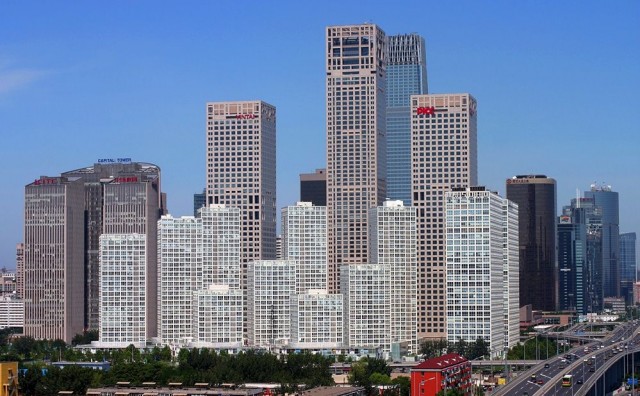central business district

Methods for the delimitation of the CBD include mapping land use intensities referring to the central business height index, recording the percentage of the land uses of each floor of each building within the CBD, and calculation of high-level pedestrian flows. The Manhattan CBD is, for example, characterized by very high offices blocks and a lack of residential buildings, which has the result making the area deserted after offices hours. In the 1970s, planners introduced the development of a resident-friendly concept, such as gentrification, to bring night life back to the downtown area. The Marunouchi District, the heart of Tokyo's CBD located near the Tokyo Station (through which more than 700,000 passengers each day commute), is characterized by the new massive Marunouchi building complex. It attracted more than 13 million visitors during its first six months.
However, characteristic of many CBDs, the three Tokyo core wards of Chiyoda, Chuo, and Minato have a nighttime population of 268,000 persons but a daytime population is 2.341 million persons. Some large cities as London and Tokyo have several CBDs. Moreover, if the CBD remains a strategic area for leading industries, it is reconfigured by technological and economic change. Many CBDs are facing several problems, such as congestion that has led to parking restrictions, and decline not only with the increasing growth of out-of-town developments with shopping centers and office parks very close to major highway intersections, but also with the cyclical decrease of business activity.
In New Orleans, LOUISIANA, after the oil industry collapse in the 1980s, almost all office inventory was abandoned as companies went out of business; and the occupancy of the CBD only ever achieved 90 percent of the capacity. After the technology bubble burst in San Francisco, CALIFORNIA, office space rates fell as much by half.
NEW BEIJING CBD
In booming economies such as in CHINA, infrastructures in new CBDs are being built. In BEIJING, workers are clearing the CBD of its aging textile factories and railroad workshops for a $20 billion complex. This new CBD is a way for China to create an image of a modern capital in line with London, Paris, and New York. The conventional CBD, as a highly concentrated core with international business, has been questioned in light of the information technology age. If centrality was synonymous with the CBD, today the new technologies and the organizational forms have changed the spatial correlates of centrality. Some questions on the future of financial districts have been raised, particularly when looking at the virtual configuration of the electronic system.
The informational economy tends to be concentrated in global cities, creating a new international division of labor. Global cities come at the top of the information hierarchy and are characterized by a high concentration of information flow and processing. The accessibility and centrality for a CBD is no longer justified, as was the case when face-to-face contacts were a necessity in business. However, clustering of services and proximity do produce agglomeration economies, and in a CBD, the services and marketing relations can, for example, enhance the quality of the services.